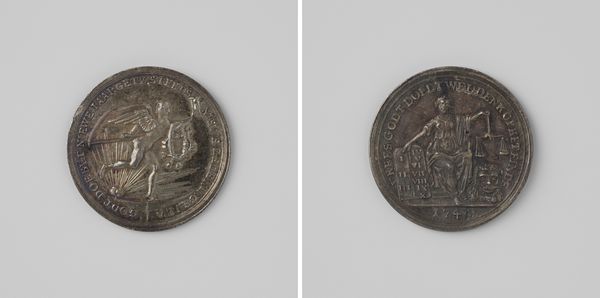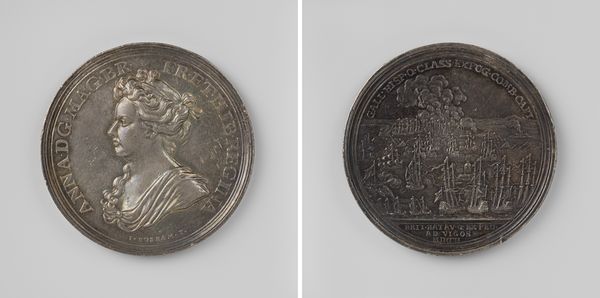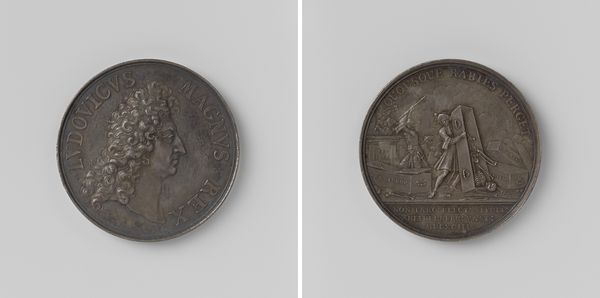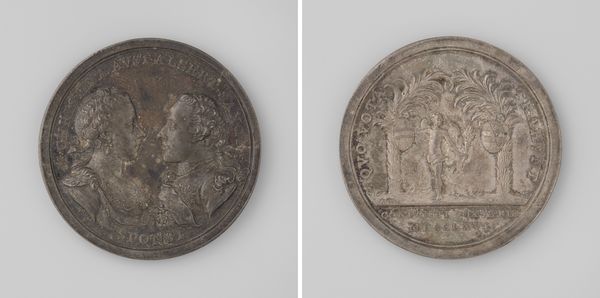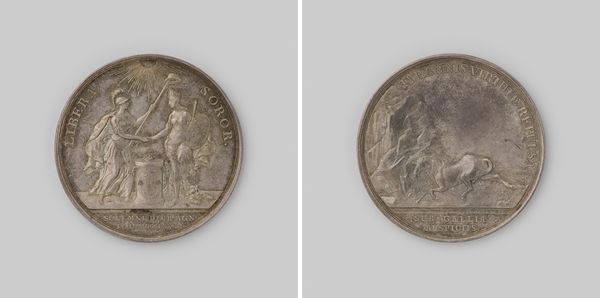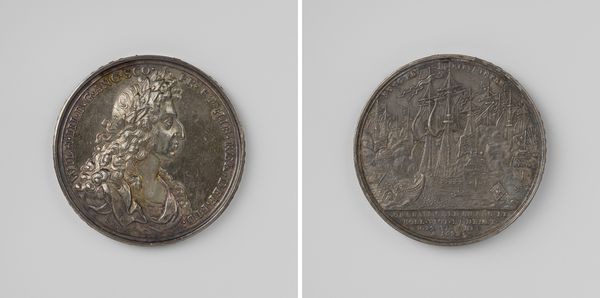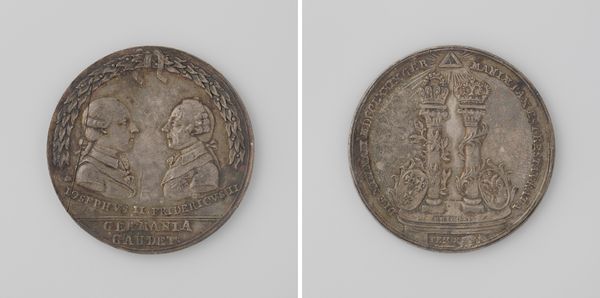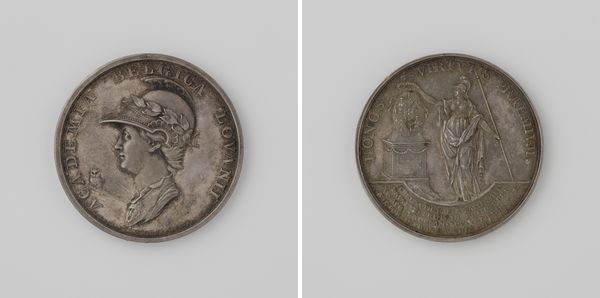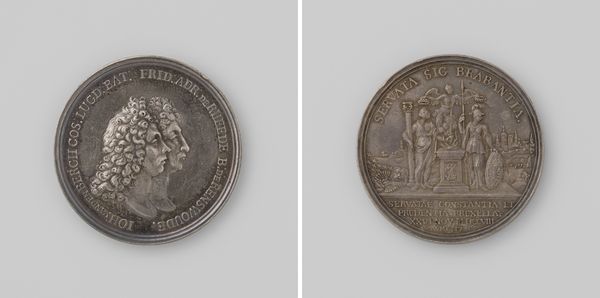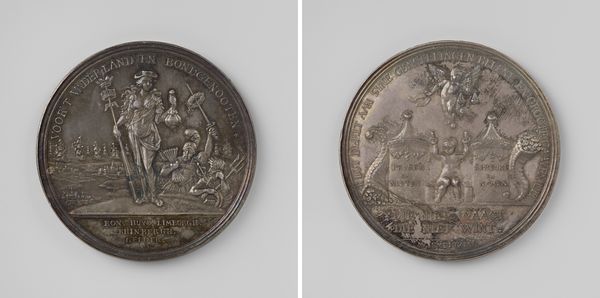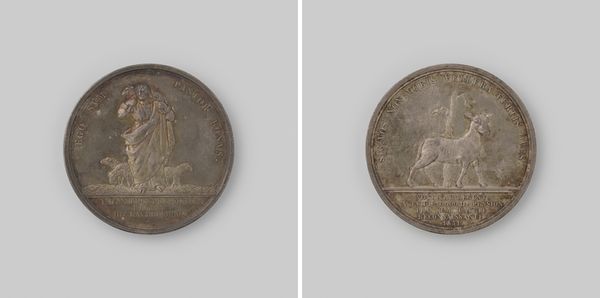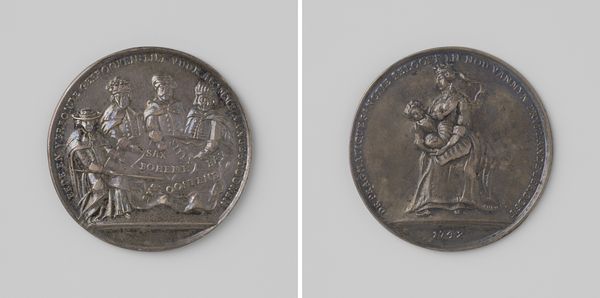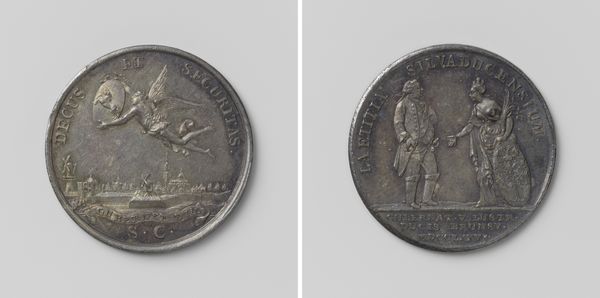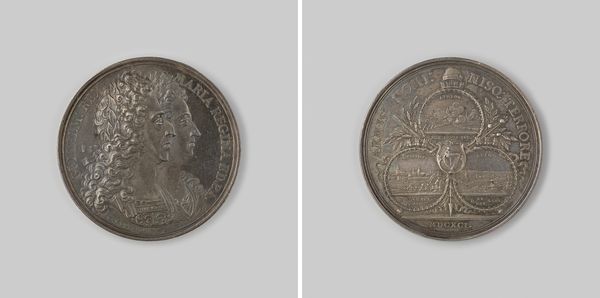
Driehonderdjarige herdenking van de invoering van het Lutheranisme in Brandenburg, ter ere van Joachim II Hector, keurvorst van Brandenburg 1839
0:00
0:00
metal, relief
#
portrait
#
metal
#
relief
#
romanticism
#
history-painting
#
academic-art
Dimensions: diameter 4.8 cm, weight 43.22 gr
Copyright: Rijks Museum: Open Domain
Editor: This piece, created by Gottfried Bernhard Loos in 1839, commemorates the three-hundred-year anniversary of Lutheranism in Brandenburg, honoring Joachim II Hector. It's crafted in metal, a circular relief with depictions on both sides. It feels quite formal, almost propagandistic in its portrayal of power and religious authority. What stands out to you in terms of the history behind its creation? Curator: Well, considering this was produced in 1839, decades after the Napoleonic wars shook up the old European order, the historical context is crucial. These sorts of commemorative pieces were often deployed to bolster a specific narrative, to legitimize a ruling dynasty by anchoring them to significant historical and religious events. Do you see how Joachim II is portrayed? Editor: Yes, on one side he looks powerful and regal holding symbols of authority, and on the other side there’s a group kneeling before him, with inscriptions below that I unfortunately can’t read. Curator: Exactly. That glorification is very deliberate. The ruling family sought to solidify their connection to the Reformation, especially given that Brandenburg later became part of Prussia, which embraced Protestantism. The image projects not just power but a kind of divine right, particularly potent during a period of social and political upheaval. Consider who would commission this piece and why. What image of themselves were they trying to project to the public? Editor: That makes a lot of sense. It's more than just remembering history, but actively shaping a political image. So understanding who is commissioning the work really frames our reading. I initially saw just a historical document but now I get it. Curator: Precisely. Examining the historical circumstances and intended audience is essential for decoding the political and social messages embedded within these seemingly simple historical objects. It invites us to explore power dynamics between religion and authority and their reflection in the public imagination.
Comments
No comments
Be the first to comment and join the conversation on the ultimate creative platform.
